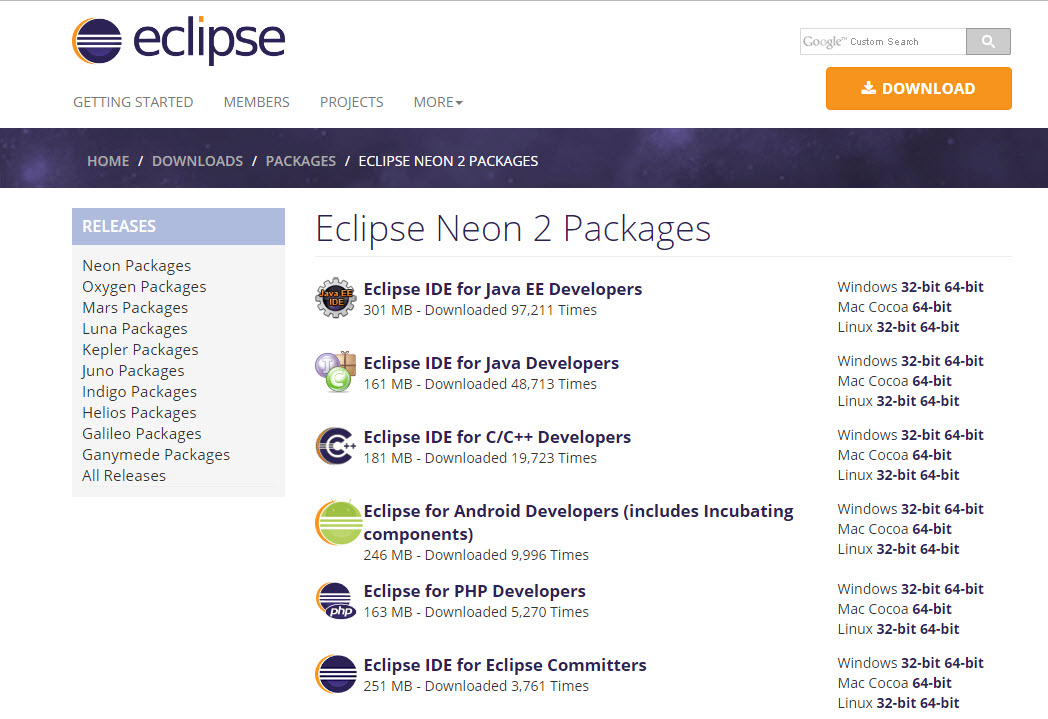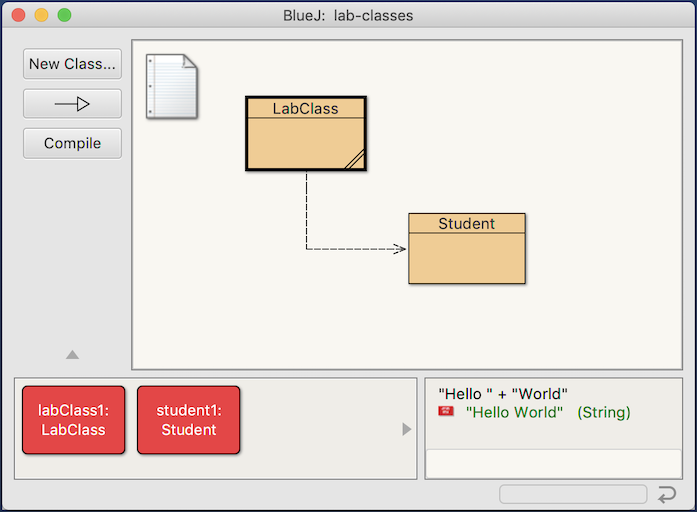This page describes how to install and uninstall JRE 8 on OS X computers.
Mac OS X Port Project. The goal of this Project is to produce a high-quality, open source version of JDK 7 for the Mac. The final release has the following goals: Pass all appropriate certification tests for Java SE 7; Include a complete, native Cocoa-based UI Toolkit; Provide excellent performance; This Project is sponsored by the Porters. Java 7 1 free download - Apple Java for OS X 10.7/10.8, Apple Mac OS Update 7.6.1, OpenJDK 7 for OS X Lion, and many more programs. Other possibly useful discussions found How OS X determines an app needs Java, Installing & Deinstalling Java SE 6 & SE 7, Adobe's Installing Java SE 6, Java Mac Security and Background to SE 6 to SE 7 Changes, Java 7 & OS X. The Apple Java for OS X 2012-006 1.0 update for Mac OS X 10.7, 10.8 operating systems delivers improved security.
Note: The JRE installation includes the JavaFX Runtime which is incorporated into the same directory structure. |

- SAPGUI 7.40 rev 2 Installation Instructions. Follow the on-screen instructions and accept all default values to complete the install. Download the SAPgui7.40.2 installer Result: The installer, SAPgui-7.40.2.dmg, should now be in your Downloads folder, or on the Desktop. Double-click SAPgui-7.40.2.dmg. Result: The dmg opens and displays the.
- Java Development Kit for Mac includes a wide variety of tools for streamlined developing, debugging, testing, and monitoring of Java applications. The package contains more than 30 individual tools and services which can be used to control every aspect of Java application development, from concept to final phase and deployment to end users.
This page has these topics:
See 'JDK 8 and JRE 8 Installation Start Here' for general information about installing JDK 8 and JRE 8.
See 'OS X Platform Install FAQ' for general information about installing JRE 8 on OS X.

System Requirements
Observe these requirements:
Any Intel-based computer running OS X 10.8 (Mountain Lion) or later.
Administrator privileges.
Note that installing the JRE on OS X is performed on a system-wide basis, for all users, and administrator privileges are required. You cannot install Java for a single user.
Only one JRE can be installed at a time. The system will not install a JRE that has a lower version than the current version. If you wish to install a lower version of the JRE, uninstall the current version as described in 'Uninstalling the JRE'.
Installing a JRE from Oracle will not update java -version symlinks or add java to your path. To be able to do this, you need to install the JDK.
JRE Downloaded File
Depending on your processor, the downloaded file has one of the following names, where version is the update number:
jre-8uversion-macosx-amd64.dmgjre-8uversion-macosx-x64.dmg
Installing JRE 8u40
If you are installing JRE 8u40, then follow these steps:
Download the file.
Before the file can be downloaded, you must accept the license agreement.
From either the Downloads window of the browser, or from the file browser, double click the file
.dmgto launch it.A Finder window appears containing an icon of an open box and the name of the
.appfile.Double click the package icon to launch the Install app.
A window appears that says, 'Java 8 Update 40 is trying to install a new helper tool. Type your password to allow this.'
Enter the Administrator login name and password and then click Install Helper.
The Install app then displays the Introduction window.
Click Next.
Oracle has partnered with companies that offer various products. The installer may present you with the option to install these programs when you install Java. Specify if you want these programs installed and then click Next.
Note:
You can disable the presentation of offers during installation by specifying the--args SPONSORS=0option in the terminal command line. For example:open /Volumes/Java 8 Update 40/Java 8 Update 40.app --args SPONSORS=0An Installation Progress window is displayed. Once the software is installed, a confirmation window appears and then an applet is launched to verify the version of Java installed.
Delete the
.dmgfile if you want to save disk space.
Determining the Installed Version of the JRE
If you have not yet installed Apple's Java OS X 2012-006 update, then you are still using a version of Apple Java 6 that includes the plug-in and the Java Preferences app. See 'Note for Users of OS X that Include Apple Java 6 Plug-in'.
Only one JRE can be installed. Installing a JRE removes the previously installed JRE. The JRE version used by the system can be determined in one of two ways:
From System Preferences click the Java icon from the Other category. This launches the Java Control Panel. Click About.
Type the following in a Terminal window (note escaped space character, ignore line break):
The system will not install a JRE that has a lower version than the current version. If you want to install a lower version, first uninstall the existing version.
Uninstalling the JRE
To uninstall the JRE, you must have Administrator privileges and execute the remove commands either as root or by using the sudo(8) tool.
Remove one directory and one file (a symlink), as follows:
Navigate to
/Library/Internet Plug-Insand remove theJavaAppletPlugin.plugindirectory.Navigate to /
Library/PreferencePanesand removeJavaControlPanel.prefpane.
Do not attempt to uninstall Java by removing the Java tools from /usr/bin. This directory is part of the system software and any changes will be reset by Apple the next time you perform an update of the OS.
See JDK 7 and JRE 7 Installation Guide for general information about installing JDK 7 and JRE 7.
See the Mac OS X Platform Install FAQ for general information about installing JDK 7 on Mac OS X.
Contents
System Requirements
- Any Intel-based Mac running Mac OS X 10.7.3 (Lion) or later.
- Administrator privileges.
Note that installing the JDK on a Mac is performed on a system wide basis, for all users, and administrator privileges are required. You cannot install Java for a single user.
Installing the JDK also installs the JRE. The one exception is that the system will not replace the current JRE with a lower version. To install a lower version of the JRE, first uninstall the current version.
JDK 7 Installation Instructions
Installation of the 64-bit JDK on Mac Platforms
When you download the Java Development Kit (JDK), the associated Java Runtime Environment (JRE) is installed at the same time. The JavaFX SDK and Runtime are also installed and integrated into the standard JDK directory structure.
Depending on your processor, the downloaded file has one of the following names:
- jdk-7u<version>-macosx-amd64.dmg
- jdk-7u<version>-macosx-x64.dmg
Where <version> is 6 or later.
1. Download the file. Before the file can be downloaded, you must accept the license agreement.
2. From either the Downloads window of the browser, or from the file browser, double click the .dmg file to launch it.
3. A Finder window appears containing an icon of an open box and the name of the .pkg file Double click the package icon to launch the Install app.
4. The Install app displays the Introduction window. Click Continue.
4a. Note that, in some cases, a Destination Select window appears. This is a bug, as there is only one option available. If you see this window, select Install for all users of this computer to enable the continue button. Click Continue.
Install Java On Mac
5. The Installation Type window appears. Click Install.
6. A window appears which says 'Installer is trying to install new software. Type your password to allow this.' Enter the Administrator login and password and click Install Software.
7. The software is installed and a confirmation window appears. Click the ReadMe for more information about the installation.
After the software is installed, delete the dmg file if you want to save disk space.
Determining the Default Version of the JDK
A: If you have not yet installed Apple's Java Mac OS X 2012-006 update, then you are still using a version of Apple Java 6 that includes the plug-in and the Java Preferences app. See Note for Users of Macs that Include Apple Java 6 Plug-in.
There can be multiple JDKs installed on a system – as many as you wish.
When launching a Java application through the command line, the system uses the default JDK. It is possible for the version of the JRE to be different than the version of the JDK.
You can determine which version of the JDK is the default by typing java -version in a Terminal window. If the installed version is 7u6, you will see a string that includes the text 1.7.0_06. For example:
To run a different version of Java, either specify the full path, or use the java_home tool:
For more information, see the java_home(1) man page.

Free Java 7 For Mac Os
Uninstalling the JDK
To uninstall the JDK, you must have Administrator privileges and execute the remove command either as root or by using the sudo(8) tool.
Navigate to /Library/Java/JavaVirtualMachines and remove the directory whose name matches the following format:*
For example, to uninstall 7u6:
Do not attempt to uninstall Java by removing the Java tools from /usr/bin. This directory is part of the system software and any changes will be reset by Apple the next time you perform an update of the OS.
*The 7u4 and 7u5 releases were installed into a directory that does not follow this format. To uninstall 7u4 or 7u5, remove the 1.7.0.jdk directory from the same location.



